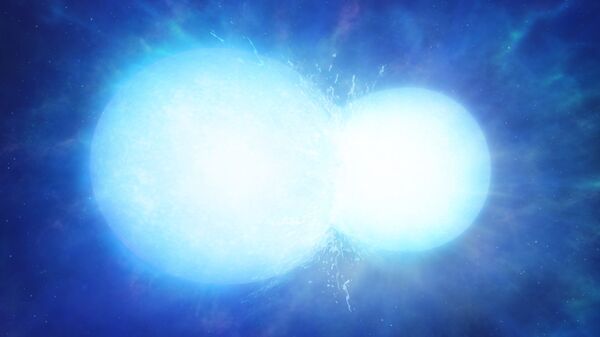Astronomers have stumbled upon a white dwarf, codenamed WDJ0551+4135, which is effectively the result of two such celestial bodies having merged into one as far back as 1.3 billion years ago, according to research published in the scientific journal Nature Astronomy.
In the remarkable stellar evolution, one of the stars is understood to have reached its red giant phase before its partner and expanded, enveloping the latter, which in its turn underwent the same process.
White dwarfs, which orbit the Milky Way, are generally small at roughly 0.6 times the mass of the Sun, but WDJ0551+4135 is 1.14 times the mass of our star – a fact that raises new questions about how these bodies evolve and the overall number of supernovae in the galaxy.
“This star stood out as something we had never seen before”, the study’s lead author Mark Hollands of the University of Warwick's Department of Physics wrote in a comment on the newly detected dwarf star, which was also been found to have “a bizarre carbon-rich atmosphere”:
“You might expect to see an outer layer of hydrogen, sometimes mixed with helium, or just a mix of helium and carbon. You don’t expect to see this combination of hydrogen and carbon at the same time as there should be a thick layer of helium in between that prohibits that. When we looked at it, it didn’t make any sense”.
Separately, the star appeared to be far older than researchers initially believed: around 1.3 billion years, compared with the universe’s 13.8 billion years of age. Older stars are believed to orbit the Milky Way faster than younger ones and this object is moving faster than 99% of the other nearby white dwarfs with the same cooling age, suggesting that it is older than it looks on the surface.
Both, the carbon composition and its stunning kinematic age are something that researchers have been unable to explain through “normal stellar evolution”.
“We’re pretty sure of how one star forms one white dwarf and it shouldn’t do this. The only way you can explain it is if it was formed through a merger of two white dwarfs”, Hollands summed up, acknowledging that the universe may hide even more such unique stars.
On top of this, no less puzzling is the fact that this merger appears to have occurred between two similarly sized stars.
“Maybe the most exciting aspect of this star is that it must have just about failed to explode as a supernova – these gargantuan explosions are really important in mapping the structure of the Universe”, the researcher went on, arguing that in the future, a special technique called asteroseismology may be used to learn about a white dwarf’s inner composition from its stellar pulsation.
The method, the scientist suggested, is an independent one that may confirm whether a star was formed through a merger.

